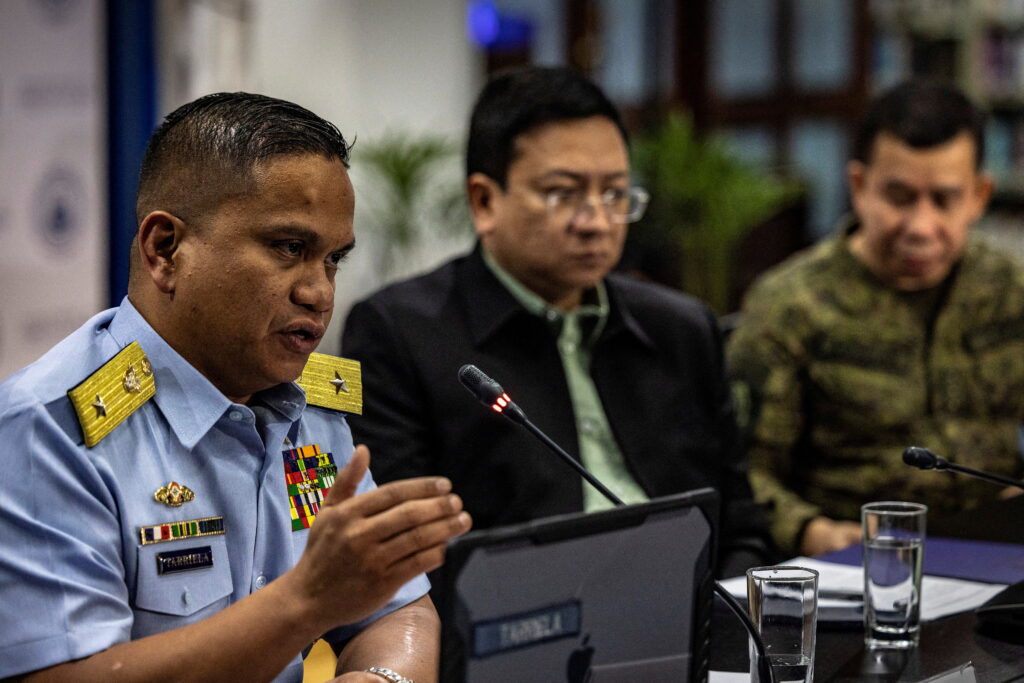In 2023, China’s Coast Guard (CCG) and maritime militia were deployed to the South China Sea in greater numbers, for longer periods of time and with more aggression than ever before. The Philippines has become the main point of maritime tensions, prompting the Philippine government to step up defence cooperation with the United States and its allies.
In November 2023, US Pacific Fleet Commander Admiral Samuel Paparo noted that Chinese officers were following orders to be more ‘aggressive’ when it came to encounters with Western militaries. In the same month, US Acting Deputy Secretary of Defense Mara Karlin called out ‘unprofessional and unsafe behaviour’ by the People’s Liberation Army.
A January 2024 report noted that in the second half of 2023, ‘physical encounters between Philippine and Chinese ships increased at an alarming rate’ during routine rotation and resupply missions to Second Thomas Shoal.
During 2023, the Philippines adopted a more assertive posture in defending its sovereign jurisdiction in its exclusive economic zone. Philippine President Ferdinand Marcos Jr initiated an assertive transparency campaign to publicise Chinese acts of intimidation and coercion in near real time.
Patrols by the Philippine Coast Guard (PCG) increased in frequency to resupply and protect Filipino fishermen. But China continually challenged patrols in the West Philippine Sea, claiming they were violating Chinese sovereignty. In late October 2023, a spokesperson for China’s Southern Theatre Command reported that it had warned off a Philippine Navy frigate for trespassing in the waters around Scarborough Shoal. This was the second time in three weeks that China had challenged Philippine naval ships operating in the West Philippine Sea.
Second Thomas Shoal, a low tide elevation, became a major point of confrontation as China took aggressive steps to prevent Philippine rotation and resupply missions to the beached BRP Sierra Madre. A serious incident took place in October when seven Chinese vessels surrounded and blocked the transit of four Philippine resupply boats.
A second incident took place in December 2023 when CCG ships fired water cannons and rammed into PCG vessels. Later that month, China deployed up to 27 vessels around Second Thomas Shoal to prevent resupply.
In response to Chinese aggression, the Marcos administration has stepped up defence engagement with the United States. In February 2023, the Philippines granted the United States temporary rotational access to four new bases under the 2014 Enhanced Defense Cooperation Agreement, bringing the total to nine bases. In April 2023, the Armed Forces of the Philippines hosted the 38th and largest iteration of Exercise Balikatan with more than 17,600 participants, mainly from the United States.
In September 2023, the Philippines and the United States conducted their first joint bilateral sail since 2016 in the South China Sea. The next month, the Philippines, United States and six other countries participated in the seventh and largest iteration of Exercise Sama Sama.
The Philippines also reached out to Australia and other regional states. In June 2023, Philippine, US and Japanese national security advisors held their first joint talks to strengthen trilateral defence cooperation. In the same month, the PCG held its first trilateral drills in the South China Sea with counterparts from the United States and Japan.
In August 2023, Australia and the Philippines conducted the first Exercise ALON, a bilateral amphibious exercise in the South China Sea that included the participation of 120 US Marines. In September, Australia and the Philippines elevated bilateral relations to a strategic partnership during Australian Prime Minister Anthony Albanese’s visit.
Notable progress was also made in negotiations to achieve a code of conduct (COC) in the South China Sea under Indonesia’s leadership as ASEAN Chair. In February 2023, the 32nd ASEAN Coordinating Council Meeting and ASEAN Foreign Ministers’ Retreat resolved that Indonesia should ‘find new strategies/approaches to speed up the process of the COC negotiation’.
The next month, Indonesia convened the 38th ASEAN–China Joint Working Group on the Implementation of the Declaration on the Conduct of Parties in the South China Sea (DOC) in Jakarta. In May, the 20th ASEAN–China Senior Officials’ Meeting on the DOC met in Vietnam after a hiatus of two years.
In July 2023, the 56th ASEAN Ministerial Meeting met in Jakarta and announced that the second of three readings of the COC had been completed. At the same time, the ASEAN–China Post Ministerial Conference adopted guidelines to accelerate negotiations on a COC in the South China Sea. In October, negotiators agreed to complete a final COC within three years. This prompted Marcos, frustrated with the slow pace of negotiations, to announce that he would consult with Malaysia, Vietnam and other states on a separate COC.
In response to a notable increase in Chinese aggression in the South China Sea, the Philippines adopted a more proactive posture in 2023 to defend its sovereign jurisdiction in the West Philippine Sea though increased patrols, especially around Second Thomas Shoal. The Philippines also markedly stepped up defence cooperation with the United States and its allies to enhance its capabilities and deter future Chinese aggression.
Tensions in the West Philippine Sea could escalate in 2024 if the Philippines takes steps to go beyond routine rotation and resupply missions to Second Thomas Shoal, or if it begins to enhance defence infrastructure on other islands in the West Philippine Sea.
Carl Thayer is Emeritus Professor of Politics at the University of New South Wales, Canberra.
This article is part of an EAF special feature series on 2023 in review and the year ahead.

